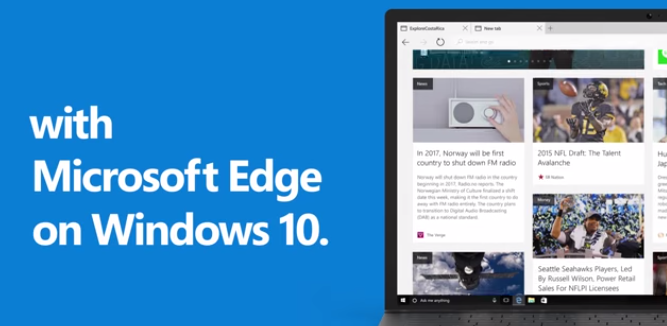Elevate Your Workflow: A Comprehensive Guide on How to Pin a Website to Windows 10’s Start Menu

Introduction
Windows 10, Microsoft’s versatile operating system, offers users a myriad of features designed to enhance productivity and accessibility. One such feature is the ability to pin websites directly to the Start Menu, providing quick and convenient access to your favorite web pages. This comprehensive guide aims to demystify the process of pinning a website to Windows 10’s Start Menu, empowering users to create a personalized and efficient digital workspace. Whether you’re a professional streamlining workflow or someone who values quick access to frequently visited sites, this guide equips you with the knowledge to elevate your digital experience on Windows 10.
Understanding the Benefits of Pinning Websites to Start Menu
1. Efficient Access:
- Pinning a website to the Start Menu allows for one-click access, eliminating the need to open a web browser and navigate through bookmarks or search engines.
2. Streamlined Workflow:
- For users who rely on specific websites for work or research, pinning to the Start Menu streamlines the workflow by providing a dedicated space for quick access to essential resources.
3. Visual Organization:
- The Start Menu offers a visual and organized interface, making it easy to locate and launch pinned websites. Users can customize the Start Menu layout to suit their preferences.
Step-by-Step Guide on How to Pin a Website to Windows 10’s Start Menu
1. Open Microsoft Edge:
- Launch the Microsoft Edge browser on your Windows 10 computer.
2. Navigate to the Desired Website:
- Go to the website you want to pin to the Start Menu. Ensure that you are on the specific page you wish to access directly from the Start Menu.
3. Access the More Options Menu:
- Click on the three horizontal dots in the upper-right corner of the browser window. This opens the More Options menu.
4. Select “Pin This Page to Start”:
- In the More Options menu, hover over the “More tools” option. From the expanded submenu, select “Pin this page to Start.” This action initiates the pinning process.
5. Customize the Name (Optional):
- A dialog box will appear, allowing you to customize the name of the tile. You can choose to keep the default name or provide a more descriptive label for the pinned website.
6. Click “Pin to Start”:
- After customizing the name (if desired), click the “Pin to Start” button. This adds a tile to the Start Menu, representing the pinned website.
7. Access the Pinned Website:
- To access the pinned website, open the Start Menu, and you should see the newly added tile. Clicking on the tile will launch the Microsoft Edge browser and open the pinned website.
8. Reposition or Resize the Tile (Optional):
- Right-click on the newly added tile to reveal additional options. You can resize the tile, making it larger or smaller, and move it to a different position on the Start Menu for optimal organization.
Tips for Optimizing Pinned Websites on Start Menu
1. Create Categories for Organization:
- Group related websites together by creating categories on the Start Menu. This could include categories for work-related sites, news, entertainment, or any other classification that suits your needs.
2. Use Live Tiles for Dynamic Content:
- Some websites support Live Tiles, providing dynamic content updates directly on the Start Menu. Right-click on a tile, select “More,” and choose “Turn live tile on” if available.
3. Utilize Folders for Multiple Websites:
- If you have multiple websites to pin, consider creating folders on the Start Menu. Drag and drop tiles onto each other to create folders, enhancing visual organization.
4. Remove Unused Tiles Regularly:
- Periodically review your pinned websites and remove any that are no longer relevant. This practice ensures that your Start Menu remains clutter-free and optimized for efficiency.
5. Explore Other Browsers Compatibility:
- While the guide focuses on Microsoft Edge, other browsers may offer similar functionalities. Explore the options in your preferred browser to pin websites to the Start Menu if using a different browser.
Troubleshooting Common Issues
1. Tile Not Appearing on Start Menu:
- If the pinned website tile does not appear on the Start Menu, ensure that you followed the steps correctly. Try restarting the browser and, if necessary, your computer to refresh the Start Menu.
2. Customization Options Not Available:
- Some websites may not support customization options for the tile name. If the customization options are grayed out, it may be due to the website’s design or compatibility limitations.
3. Issues with Live Tiles:
- If you experience issues with Live Tiles not displaying dynamic content, check if the website supports this feature. Additionally, verify that Live Tiles are enabled for the specific tile in the Start Menu.
4. Browser Updates:
- Ensure that your Microsoft Edge browser is up to date with the latest updates. Browser updates often include improvements and bug fixes that enhance features like pinning websites to the Start Menu.
Conclusion
Pinning websites to Windows 10’s Start Menu is a simple yet powerful way to personalize your digital workspace and optimize your workflow. This comprehensive guide, enriched with step-by-step instructions, optimization tips, and troubleshooting insights, empowers users to make the most of this feature. Whether you’re a professional streamlining work-related websites or someone who values quick access to favorite online destinations, let this guide be your companion on the journey to a more organized and efficient Start Menu. As you explore the possibilities of pinning websites, may your Start Menu become a tailored hub that reflects your digital preferences and contributes to a seamless and enjoyable computing experience.




